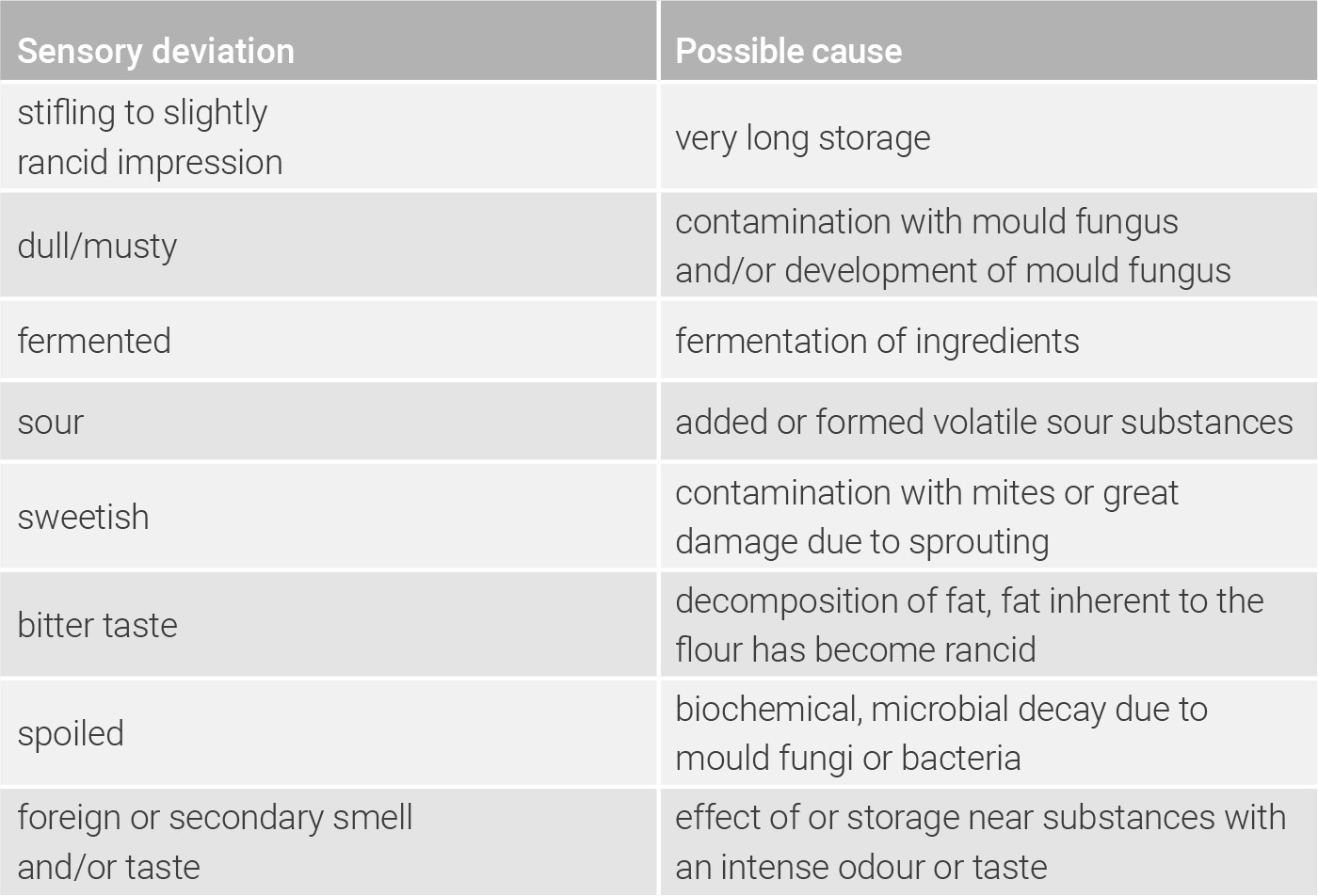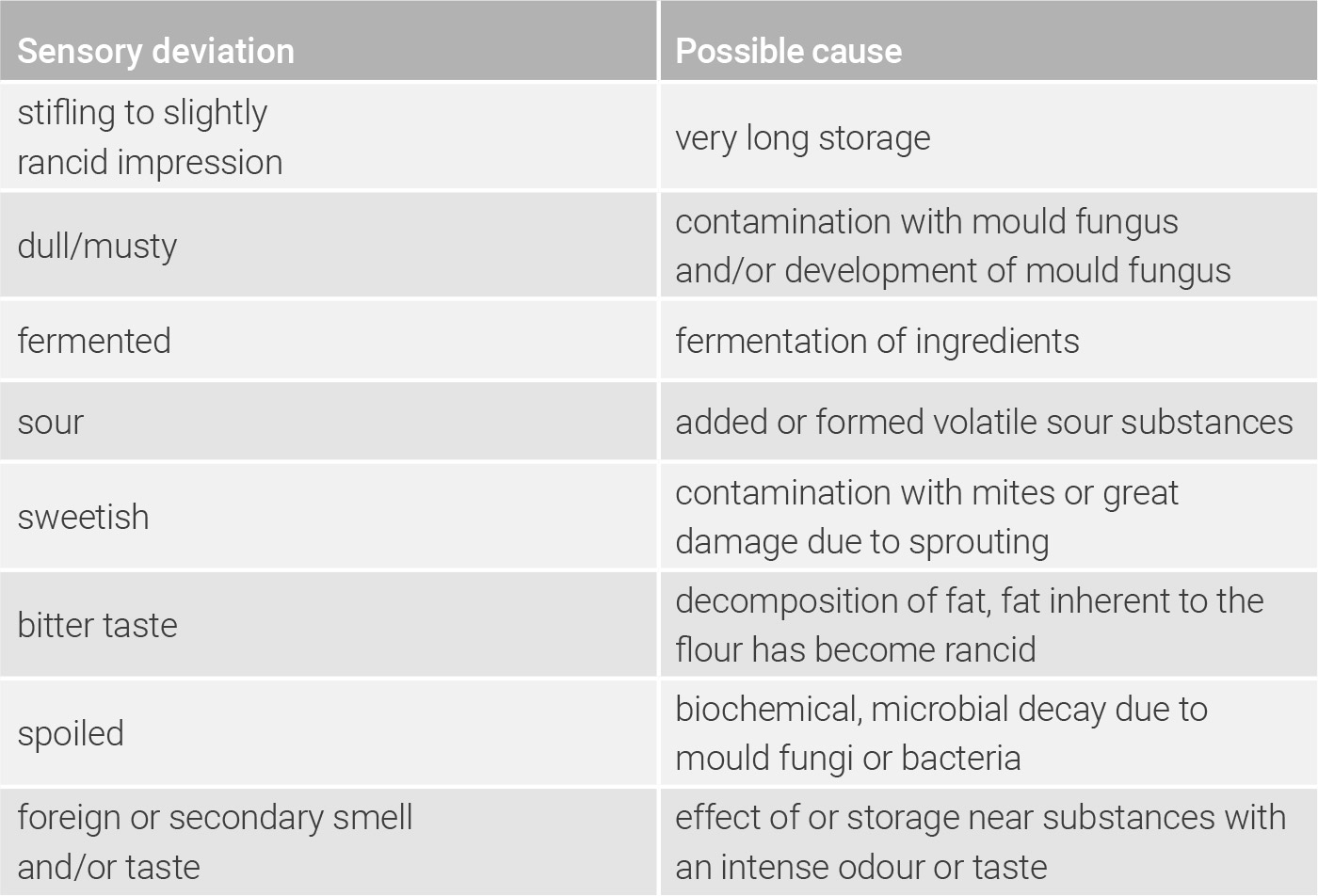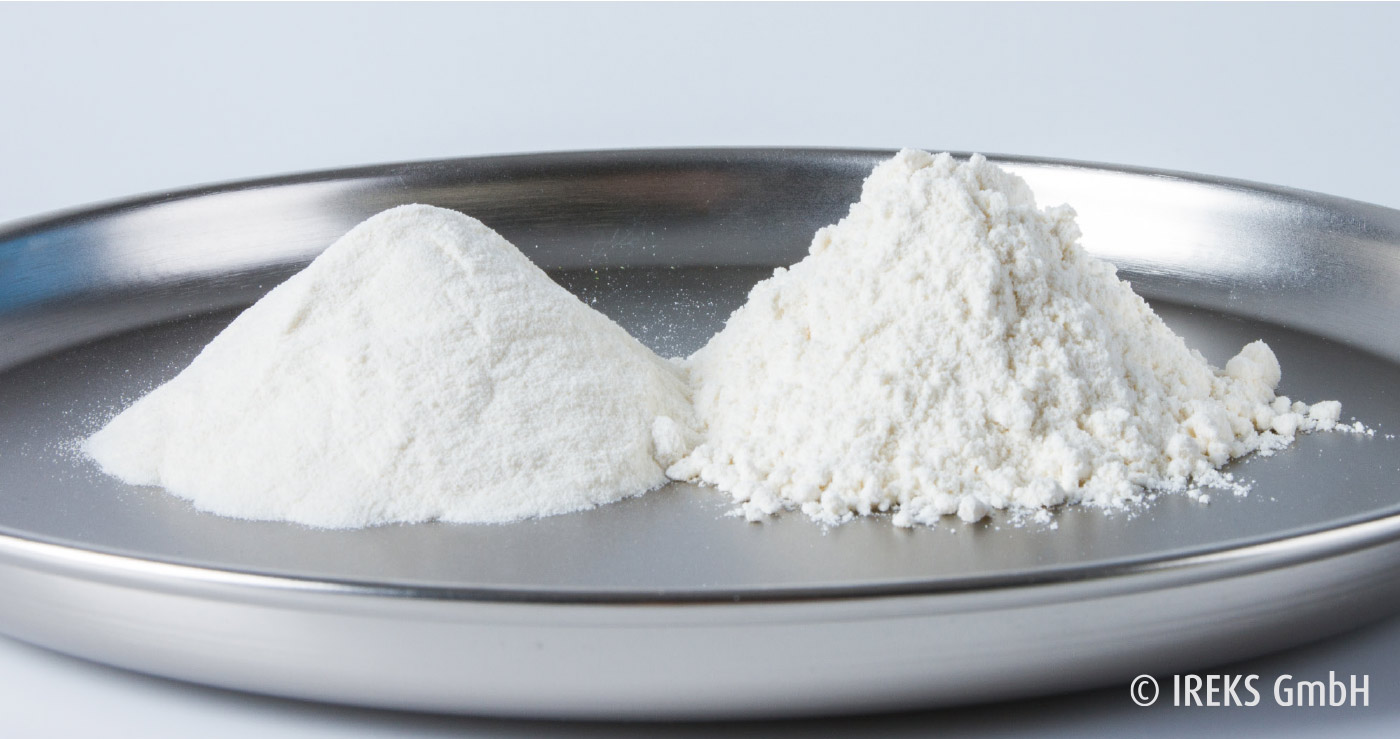Visual test
The Pekar test is suitable to carry out a visual assessment of flours. Here, the flour is put onto the Pekar board or a glass plate using a spatula and pressed flat. Subsequently, the sample is dipped slowly and sloping into a bain-marie and removed once again. Differences in colour or spots can now be better seen on the damp upper surface.
Two or more flours are generally compared to one another here. It is assumed that fresh flours have a dull shine and too old flours appear rather more chalky and blunt. This is the result of the decomposition of the flour colours due to age (carotenoids). Also the mineral content or the hull percentage of a flour influence the colour and, with the help of the Pekar test, can be estimated approximately.
In addition, the Pekar test is the basis for the evidence of ascorbic acid in the flour. Here, a reagent (Tauber’s reagent) is put onto the still damp flour sample following the Pekar test. This leads to blue spots or blotches if ascorbic acid is present.
Test for smell/Test for taste
Both tests for smell and taste can be carried out directly on the flour. In addition, the flour can be scalded with hot water (approx. 65° C), whereby a foreign odour or taste can be perceived better.
In the test for taste, the flour can be stirred with double the amount of hot water to subsequently be tried. In table 2.1, corresponding deviations are given.
Also some milled grain products can already have a bitter taste in a fresh state, e.g. milled wholemeal, milled rye and milled oat products. This should not necessarily be regarded as a depreciation.
The degree of acidity also points towards a milled grain product which has been stored too long. An excessive degree of acidity points to a rancid, musty milled product. These products should no longer be used, as the baked goods made from these have a noticeably negative taste.
Rubbing test
By means of the rubbing test, it can be checked whether a flour is coarse or smooth. To do this, the flour is rubbed between the thumb and the fingers. In general, a coarser flour has a higher protein content and thus better baking properties as well. Doughs which are made using a coarse flour absorb the water more slowly and have a drier upper surface.
Smooth flours, on the other hand, are more finely milled, have a higher percentage of damaged starch and are more difficult to process. But the rubbing test is generally viewed as a subjective and fast method which cannot replace the instrumental flour analysis.





